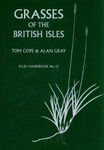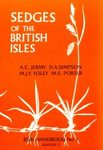Field / Identification Guide Identification Key
By: Mark Lynes(Author), Kevin Walker(Contributor), Jeremy Roberts(Editor)
221 pages, colour photos, b/w line drawings, b/w distribution maps
![Alchemilla Alchemilla]()
Click to have a closer look
About this book
Customer reviews
Related titles
About this book
The UK and Irish Alchemilla flora stands at twenty species: fifteen natives and five introductions. Of the native species, four are recently-published names by the author of this new work, set to become the standard for the genus in these islands.
Mark Lynes’ long experience with the genus, working with luminaries such as Margaret Bradshaw in Teesdale, and in Scandinavia Hans Rydberg and the late Stefan Ericsson, has put him in good stead to tease out for us the intricacies of this ‘critical group’, with its often puzzling variants and plastic morphologies. Whilst some species are likely still being overlooked – even by those with some familiarity with the group – others may be over-recorded, as Mark explains.
The gradual – sometimes tangled – revelation of our current understanding of our Alchemilla flora is detailed, through the investigations of alchemillologists of the calibre of Buser, Rothmaler, and Samuelsson, and in our own time, Max Walters, and Margaret Bradshaw.
Sections on the Alchemilla plant, guidance on identification, synopsis, dichotomous key, and key-character tables, precede the full species accounts. Each species has sections on etymology; distribution, habitat and status (for most species, contributed by Dr Kevin Walker); general appearance and a full description; distribution map; and the crucial discussions on confusion species.
Diagrams illustrate the distribution, density and posture of stem and leaf hairs. Numerous colour images show key comparative features of each species. Appendices expand on the taxonomic circus that has been Alchemilla minima; suggest a number of potential additions to the UK Alchemilla flora, and provide a full synonymy. References, glossary and index round off.
Customer Reviews
Field / Identification Guide Identification Key
By: Mark Lynes(Author), Kevin Walker(Contributor), Jeremy Roberts(Editor)
221 pages, colour photos, b/w line drawings, b/w distribution maps
"Alchemilla, the lady’s-mantles, is a genus of plants in the rose family, a tight group of closely related species that will test the ability of any field botanist. Lady’s-mantles are apomicts, that is they reproduce without fertilisation, with the effect that most of the species are very similar, differing only in small details. Hence they are overdue for the kind of in-depth study you always get in a BSBI Handbook. This one certainly goes to town on identification. [...] A key feature is the well-printed state-of-theart close-up photography on every page, including a useful all-species leaf-comparison on the back cover. [...] And yet… there is so much he could have said but did not. [...] You can find out more about all these aspects on the BSBI’s online accounts, but a rounded portrait of lady’s-mantles is surely also fitting in a handbook of 220 pages. As it is, the author jumps straight into the detail of
identification as though that is all its readers will want to know about [...]"
– Peter Marren, British Wildlife 33(7), June 2022









































